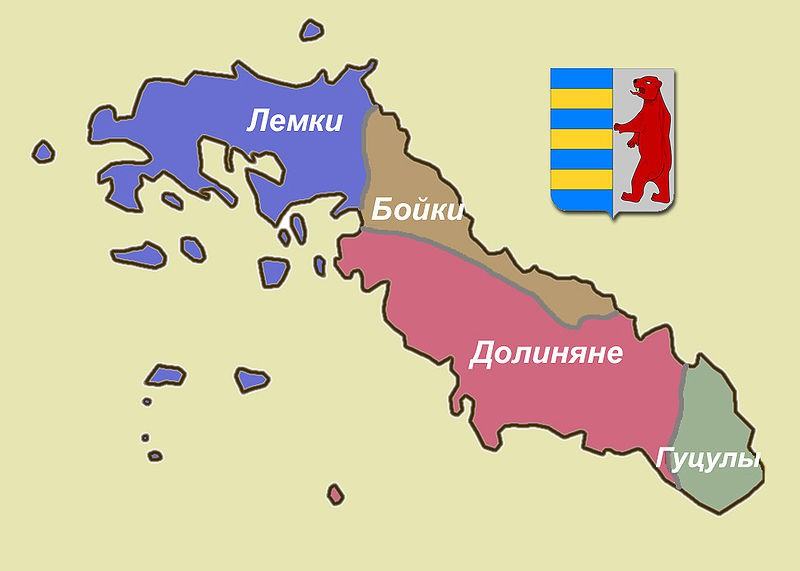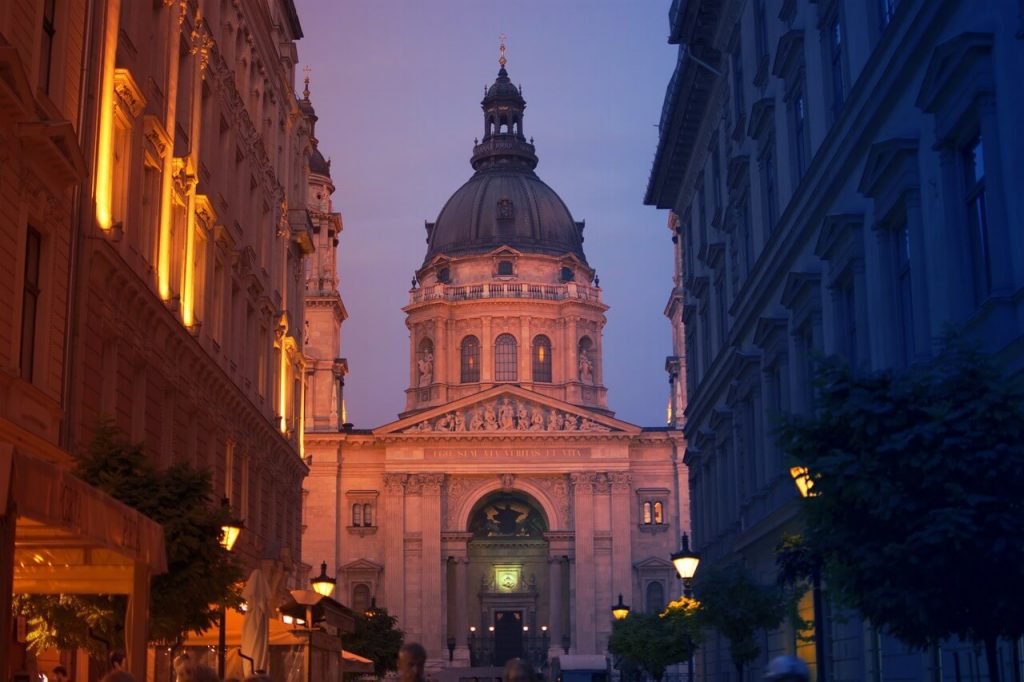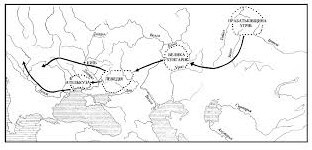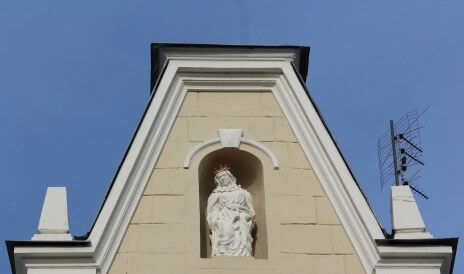Origin Hungarian it still remains a mystery to scientists. According to one hypothesis, their ancestral home was located beyond the Ural mountains, which explains their belonging to the Finno-Ugric language group. In the first half of the first Millennium BC, Hungarian tribes left the Urals and roamed with their herds of cattle on the steppes of the Volga region (the territory of modern Bashkiria was then called ” Magna Hungari»).
During the great migration of peoples, the Hungarians found themselves on the black sea coast and in the interfluve of the Danube and the Dnieper. According to another hypothesis, the Hungarians fell into the Carpathians back in the seventh century. What is certain is that since the mid-800s, Hungarian soldiers, entering into friendly alliances with the Franks and Moravians, took part in battles on the territory of the Carpathian basin.

Fleeing from the constant raids of the Pechenegs, the Hungarian tribes in 895 went beyond the Carpathians to search for their new homeland. Before that, for legend, the leaders of the seven tribes made an Alliance that was sealed with blood. Led half a million Hungarians in the Pannonian plain Prince Almosh, power from which during the campaign took over his son Arpad. The Hungarians managed to conquer significant territories. In the new place, the Ugric tribes grazed cattle and engaged in agriculture, the traditions of which they adopted from the local Slavs. In addition, Hungarian soldiers collected tribute from the peoples of Europe for several decades, until the German king Otto defeated them at Ausburg in the battle of the Lech river in 955.
Arpad’s great-grandson, Prince Geyser, acceptedChristianity and his son Istvan was brought up in the Christian spirit, for which he invited German missionaries’. The wife of the young Istvan was the sister of the Bavarian king gisella (and herself, whose statue adorns the building of the music school in the city Uzhgorod).
Istvan I the Saint continued the work of Arpad, consolidating the Hungarians into a Christian power. Throughout Hungary, the construction of Christian churches began temple, the country was divided into ecclesiastical districts. Invited from Western Europe monks they were not only missionaries, but also educators. It was they who spread viticulture, gardening and crafts in these lands, and laid the foundations of the Hungarian writing system. In the year 1000 Stephen I was crowned by the Pope, this also increased the influence of Christianity in the Hungarian lands. The leaders of the tribes that professed paganism, Istvan destroyed, and their lands were confiscated. All over the country, the Royal castle, which was ruled by the puppets of Stephen I – ishpany. Even the modern administrative system of Hungary is based on the system of districts created by the king. Thanks to the organizational activities of Istvan I, canonized in 1083, Hungary was able to resist the hegemony of the Holy Roman Empire of the German nation and defeat the troops of Emperor Conrad II.
It was during the time of Istvan I that the long process of including the territory of modern Transcarpathia in the Hungarian Kingdom began, which ended as early as the XIV century.

Фото Святого Іштвана
В день нашей свадьбы разразился ливень.
Тоскана, буйно цветущий май, итальянская вилла и церемония с десятками приглашённых под открытым небом.
Разозлить невесту в день свадьбы - к смертоубийствам. Примета такая!
Подходили ко мне на цыпочках, с благоговейным шёпотом и уговаривали перенести свадьбу в помещение. Все - от подружек невесты до свадебного распорядителя (последний заметно нервничал и кажется, немного поседел)
Я качала головой и просила выдохнуть. Всё будет хорошо. Тучи разойдутся, солнце выглянет и это будет самая крутая свадьба под открытым небом живописной Тосканы.
У меня есть очевидцы! Тучи разошлись за час до свадьбы, за полчаса вышло солнце и до конца дня не пролилось ни капли дождя.
Я всегда умела договариваться с природой!
Как ещё объяснить, почему день рождения Венгрии, главный праздник года, традиционно отмечаемый 20 августа, перенесли из-за шторма как раз на те даты, когда в Будапеште оказалась я?!
Лучший салют Европы этого года.
Венгры не просто так празднуют с размахом: потомков святого Иштвана то и дело захватывали и праздновать основание Венгрии, как независимого государства, строго запрещали. Венгры снова празднуют свой день с 1991 года - пышно и громко, компенсируя все утраченные годы.
Река, легкий бриз, небо в огнях и уснувшая под грохот фейерверков Элли.
Поздравляю имеющих отношение. Не умеющим - кусочек красоты в ленту!
Если будет нужна помощь с погодными условиями - обращайтесь!
#budapesthungary #святойиштван #hungaryday #20august2022 #saintstephensday #veorellie_путешествия
Рубрика "Истории магнитов на холодильнике"
Fridge magnets stories
Holy Crown
Budapest, Hungary
.
The Holy Crown of Hungary today display in the Parliament House in Budapest. The coronation crown was used by the Kingdom of Hungary since the twelfth century. Holy Crown of Hungary consists of two main parts: hoop and top.
The lower part is a Byzantine crown, the upper part is cross-shaped- the Corona Latina. The two parts were joined into the present shape probably around 1200.
.
According to legend the cross on the top was knocked crooked in the 17th century damaged by the top of the iron chest housing the insignia being hastily closed without the crown having been placed in it properly.
.
At the end of the Second World War the crown was recovered and stored till 1978 in Fort Knox, Kentucky alongside the bulk of America's gold reserves.
Святая корона
Будапешт, Венгрия
Я уже рассказывал о прекрасном здании парламента в Будапеште в одном из постов про этот город.
.
. А сегодняшний пост посвящен реликвии, которая хранится внутри этого здания — Святой короне Венгрии (фото 4, которое взято из Википедии).
Корона Святого Иштвана (в она же Корона святого Стефана по именам средневековых правителей Венгрии) — один из главных символов страны. Как считается, корона была составлена из двух половин — верхней и нижней. На нижней части короны имеет надписи на греческом языке, а верхней — на латыни.
.
Примерно в XII веке обе части короны были объединены в одну. .
.
Позже корона была увенчана крестом, с которым связана еще одна легенда. На фото видно, что крест установлен с наклоном. Согласно легенде, во время одной из средневековых смут, корону решили вынести из дворца и поместили в ларец. Корона была чуть больше ларца и крышкой погнули крест. Крест, в память о произошедших событиях, выравнивать не стали, и в таком виде он стал изображаться на всех гербах.
.
Наконец, после Второй мировой войны, корона оказалась в американской зоне оккупации и до 1978 г. она хранилась в знаменитом Форт-Ноксе, хранилище золотого запаса США, пока не была возвращена в Венгрию.
.
#hollycrown #hungarycrown #hungarianparliamentbuilding #geoalphabet_магниты #венгерскийпарламент #святаякорона
Что может быть ещё более волшебным и сказочным и запоминающимся , чем рождественская ярмарка . На площади святого Иштвана перед самым знаменитым и известным собором Венгрии , мы посетили большую праздничную ярмарку . Не передать словами какое праздничное настроение мы получили : ручные работы сувениров, горячий венгерский глинтвейн , а какая вкусная национальная еда 🥘- это было волшебно . Вокруг Базилики множество ресторанов с национальной кухней и атмосферой самого города . 2 дня мы возвращались в одно и то же место , чтобы насладиться преддверием нового года и бухом святого Базилика #святойиштван #будапешт🇭🇺 #budapesht🇭🇺 #basílica #budapesthungary
Когда мы были впервые в Будапеште, хозяин аппартаментов, отдавая ключи, долго отмечал нам на карте достопримечательности, одновременно грустно качая головой ( "как же так - только два дня в таком городе!") Среди всех отметок особенно отметил базилику св. Иштвана, смотровую площадку которой рекомендовал в первую очередь, несмотря на близость колеса обозрения. И Томаш был прав!) Летом, к сожалению, мы не успели попасть, так как это нужно сделать до шести вечера - потом начинаются органные концерты. Поэтому, приехав во второй раз в столицу Венгрии, не откладывая это важное дело в долгий ящик, мы отправились на площадь св. Иштвана, чтобы посмотреть на крыши Будапешта с высоты 96 метров!
Вход стоит 600 форинтов (меньше 2€). На колесо, кстати около 9€ и видно с него меньше. 😁
#будапешт #базиликасвятогоиштвана #венгрия #отдых #путешествие #святойиштван #поездка #осеннийотпуск #осень #смотроваяплощадка #сентябрьвбудапеште #сентябрь #крышибудапешта #путешествиеназападивосток #самостоятельноввенгрию #самостоятельновевропу #базилика #панорамабудапешта #европа #budapest #hungary #trip #travel #europe #autumn #churchststefan #basilica #observation #roofs
Здание парламента — самое большое в Венгрии; в нём 691 помещение, 29 лестниц и 10 двориков. В честь дня Святого Иштвана можно было попасть только в купольный зал, украшеном 16 статуями королей и правителей Венгрии, где хранится корона святого Иштвана вместе со скипетром, державой и мечом.
#Венгрия #Будапешт #Буда #Пешт #парламент #праздник #святойиштван #базилик #коронаиштвана #деньсвятогоиштвана #Hungary #Budapest #Buda #Pest #Parliament #holiday #Istvan #Basil #CrownofIstvan #Istvan'sday
Святой Иштван I - король Венгрии, приведший страну к христианство.
#святойиштван #будапешт #венгрия #trip2021 #sculpture #budapest #hungary #szentistván
Собор Святого Стефана строился 54 года. Строительство началось в 1851 году и первоначально велось по проектам архитектора Йожефа Хильда. В 1868 году, когда храм был практически готов, произошло обрушение купола здания. Возглавивший впоследствии строительство Миклош Ибль сумел возвести новый купол по собственному проекту, удачно вписав его в композицию всего здания. Завершал строительство уже Йожеф Каузер, на долю которого выпали, в основном, внутренние работы.
Собор был освящён 9 ноября 1905 года. На освящении присутствовал император Франц Иосиф I. #базилика #святойиштван #стефан #будапешт #венгрия #летоввенгрии #яэкскурсовод #путешествие
.
.
.
#budapesthungary #budapest #budapešť #будапешт #будапештзимой #budairakpart #гелерт #gellerthill #gellerthillbudapest #szentistvankiraly #святойиштван
Базилика Святого Стефана расположена в Пеште. Стефан- это Степан по-русски или Иштван по-венгерски.
Длина собора — 87,4 метров, ширина — 55 метров и высота — 96 метров. Наряду со зданием парламента (высота обоих зданий одинакова — 96 метров) — самое высокое историческое здание Будапешта. Базилика Святого Стефана вместе с базиликой святого Адальберта в Эстергоме и Эгерской базиликой входит в тройку крупнейших церквей страны.
Храм построен в стиле неоренессанс, в плане представляет собой равносторонний крест. Купол высотой 96 метров и диаметром 22 метра.
По бокам от главного фасада расположены две высокие колокольни. В правой колокольне находится самый большой колокол страны весом в 9 тонн. Над центральным входом высечена надпись на латыни — Ego sum via veritas et vita (Я есмь путь и истина и жизнь Ин. 14:6). #базилика #святойиштван #стефан #будапешт #венгрия #летоввенгрии #путешествия #яэкскурсовод









